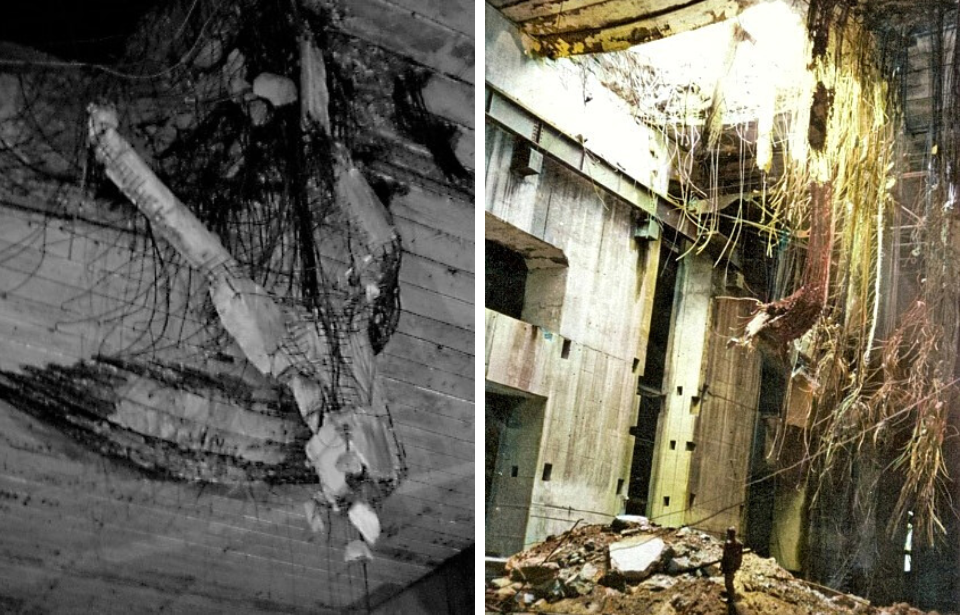During the Second World War, the British dominated the waterways. Their naval fleet proved to be one of the biggest threats to Germany and, as such, the Kriegsmarine felt it needed to step up its own presence. However, to increase U-boat production, it needed a bomb-proof space. Construction of the Valentin pen began just as the conflict turned out of favor for Germany. While it never saw completion, it proved that reinforced concrete could be a force against aerial attacks.
Valentin was built almost entirely of reinforced concrete
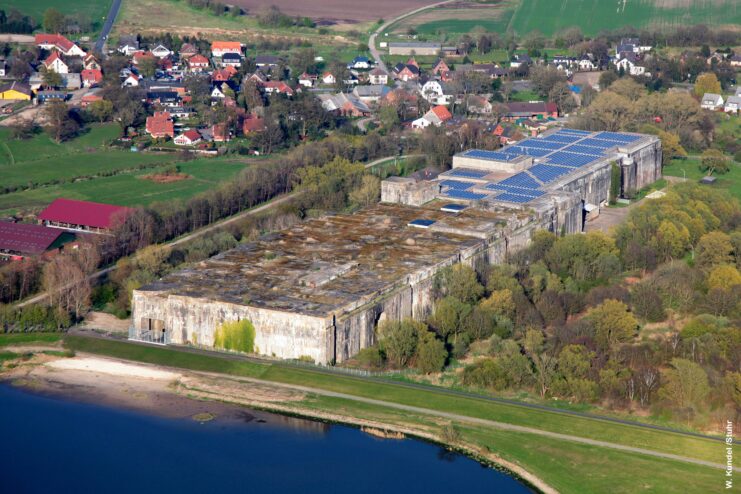
Valentin was one of the largest military projects undertaken by Germany during the Second World War. Construction began in 1943 along the Weser, between Rekum and Farge.
The bunker was 426 meters long and 97 meters wide, with 4.5-meter-thick reinforced concrete walls. Its overall height varied, measuring anywhere from 22.5 to 27 meters, depending on the spot, and its reinforced concrete arches were just as thick as its walls. Some areas were even thicker, including the eastern section of the roof, which was seven meters wide.
Covering over 35,000 square meters, Valentin was the largest fortified U-boat facility in all of Germany. The only one that was larger was in Brest, France. Like other U-boat pens, Valentin was designed to protect the submersibles from air raids. It served another function, as well, which made it unique when compared to similar facilities.
Forced laborers constructed the U-boat pen
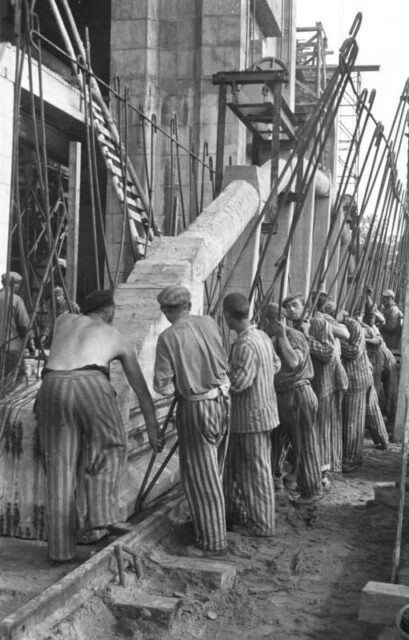
To build such a large and sturdy structure, the Germans employed forced labor, as they’d previously done with other projects. These laborers were primarily comprised of Russian, French and Polish prisoners of war (POWs), many coming from seven nearby concentration camps, including Neuengamme.
It’s estimated that around 10,000-12,000 laborers built Valentin, toiling from 7 AM to 7 PM. Working and living conditions were horrendous, leading to a high death rate among those involved. While only 553 have been officially identified, the total death toll is estimated to be as high as 6,000.
Valentin wasn’t just intended to be a storage facility
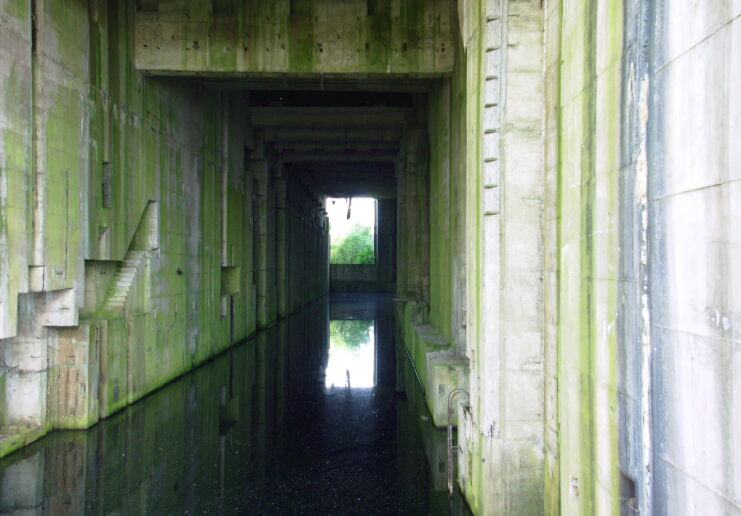
While Valentin was going to be used to house German U-boats, it was also intended to manufacture them. Bremer Vulkan was to oversee the production of Type XXI Elektroboots, with 4,500 forced laborers tasked with building them.
U-boats and other submersibles were never meant to be built from scratch at Valentin. Rather, eight parts were to be fabricated elsewhere, shipped to the facility and assembled on-site. The size of the pen allowed for 13 assembly bays, each responsible for carrying out one part of the assembly. They differed in size, depending on their intended use.
Two of the bays were sectioned off by high walls that could be sealed through water-tight floodgates and flooded to create a pool depth of about 20 meters. The very last bay was the testing area, where completed U-boats would checked for leaks and other issues. The gateway was located along the far western wall and, after opening the sliding bomb-proof door, led to the Weser.
In March 1945, after nearly two years of construction, Valentin had reached 90 percent completion. It was to become fully operational that August, with approximately 14 vessels manufactured per month.
Hit with the Royal Air Force’s ‘Grand Slam’ bomb
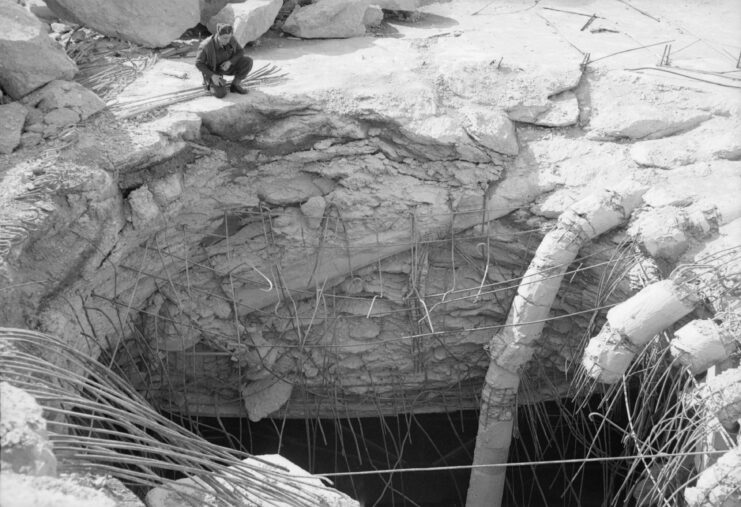
On March 27, 1945, Avro Lancasters with the No. 617 Squadron RAF attacked Valentin in a bombing raid. Each aircraft carried a single earthquake bomb – heavy bombs dropped from high altitudes to penetrate, detonate in and destroy reinforced structures. The ones onboard the Lancasters included 10-ton Grand Slams and five-ton Tallboys.
Of the bombs released, two Grand Slams hit the bunker, penetrating halfway through the 4.5 meter-thick western section of the roof before detonating. When they exploded, they broke through the remaining concrete, collapsing the roof down on the forced laborers below. Many survived as a result of the bomb not fully making it through the roof before detonating.
Other areas surrounding Valentin were also bombed by the Royal Air Force (RAF), including concrete mixing and electricity plants, which received far more damage. Three days after the attack, US aircraft dropped Disney bombs, which caused little damage.
Valentin was ultimately abandoned by the Germans following these air raids and, just four weeks later, the area was occupied by the British Army’s XXX Corps. Remarkably, it was later determined that the seven-meter-thick eastern section of the bunker’s roof would have likely been able to withstand the initial explosions caused by the Grand Slams. However, it remains unclear as to whether it would have survived repeated impacts.
Valentin has become a memorial and museum
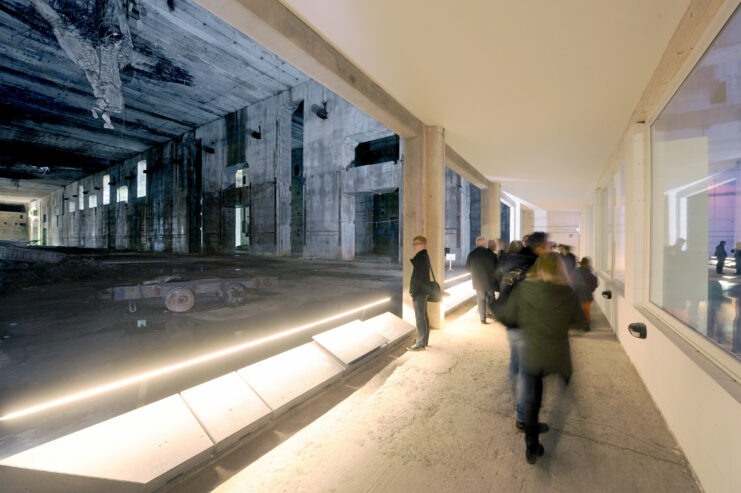
When World War II came to an end, Valentin was stripped of its machines and tools and, by 1946, had become the test site for bombings by the RAF and US Army Air Forces, in what was called Project Ruby. Testing was intended to determine the use of penetrating bombs on structures built from reinforced concrete, just like the U-boat pen.
Further bombings failed to destroy Valentin, so it was slated for demolishing via blasting. However, blasts could prove damaging to the nearby suburbs, so the structure remained standing. Instead, it was converted into a storage area for the German Navy in 1960.
More from us: The Little-Known Lost Battalions of World War II
In 2008, Valentin was put up for sale. The German military continued to occupy the space until it was purchased by a group in 2010, which transformed it into a memorial and museum. Today, public tours are available, so visitors can see the impact of the Grand Slam bombs on the structure.
